Chanel’s le19M lands in Tokyo with an exhibition that marries Parisian savoir-faire and Japanese craft
Wallpaper* gets a tour of ‘La Galerie du 19M Tokyo’, a new exhibition that sees craftspeople from Chanel’s network of artisans, le19M, unite with their counterparts in Japan for an intriguing cross-cultural exchange
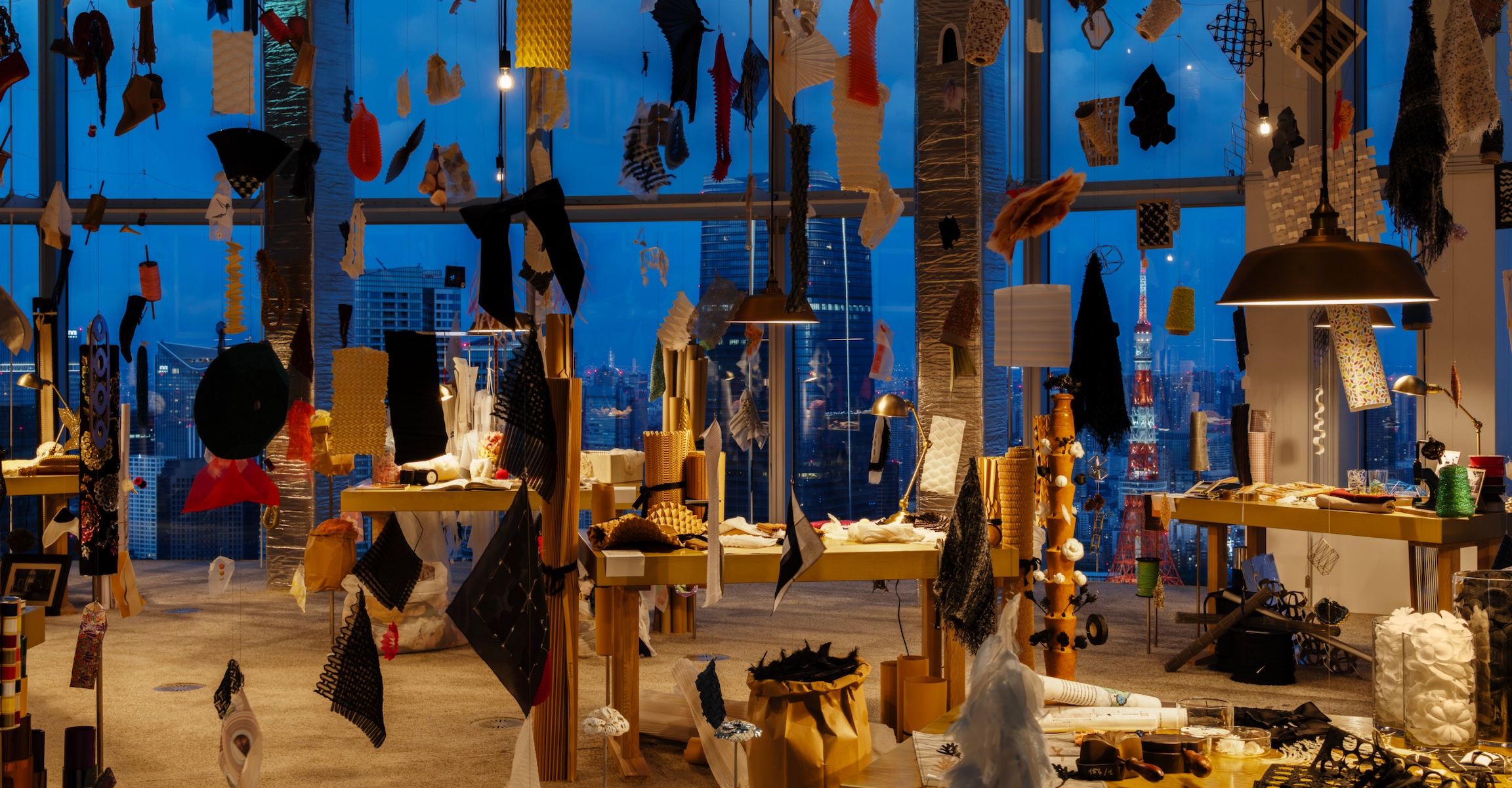
Craft, concentration and curiosity: these are some of the codes embedded in Chanel’s DNA, and the same applies to the workshops that help create the house’s collections. A new exhibition in Tokyo sees le19M – the Parisian hub that brings together the house’s craft métiers and their workshops under one roof – travel to the city, creating a dialogue between Parisian savoir-faire and traditional Japanese craft.
Amid increasing moves in the fashion industry to outsource production, le19M is doing the opposite. Since 1985, Chanel has integrated its maisons d’art – workshops and companies producing fabrics, embroidery, buttons, and accessories, some with histories dating back to 1853 – under its umbrella, securing production in-house. ‘To ensure that the maisons d’art innovate and perpetuate their crafts, and to usher them to work with as many clients as possible, in a way for their creativity to be challenged, [as well as] to foster dialogue between different crafts to nurture new ideas,’ Bruno Pavlovsky, president of Chanel SAS and president of le19M, tells Wallpaper* of the importance of bringing these craftpeople into the fold.
Chanel’s le19M lands in Tokyo with new exhibition
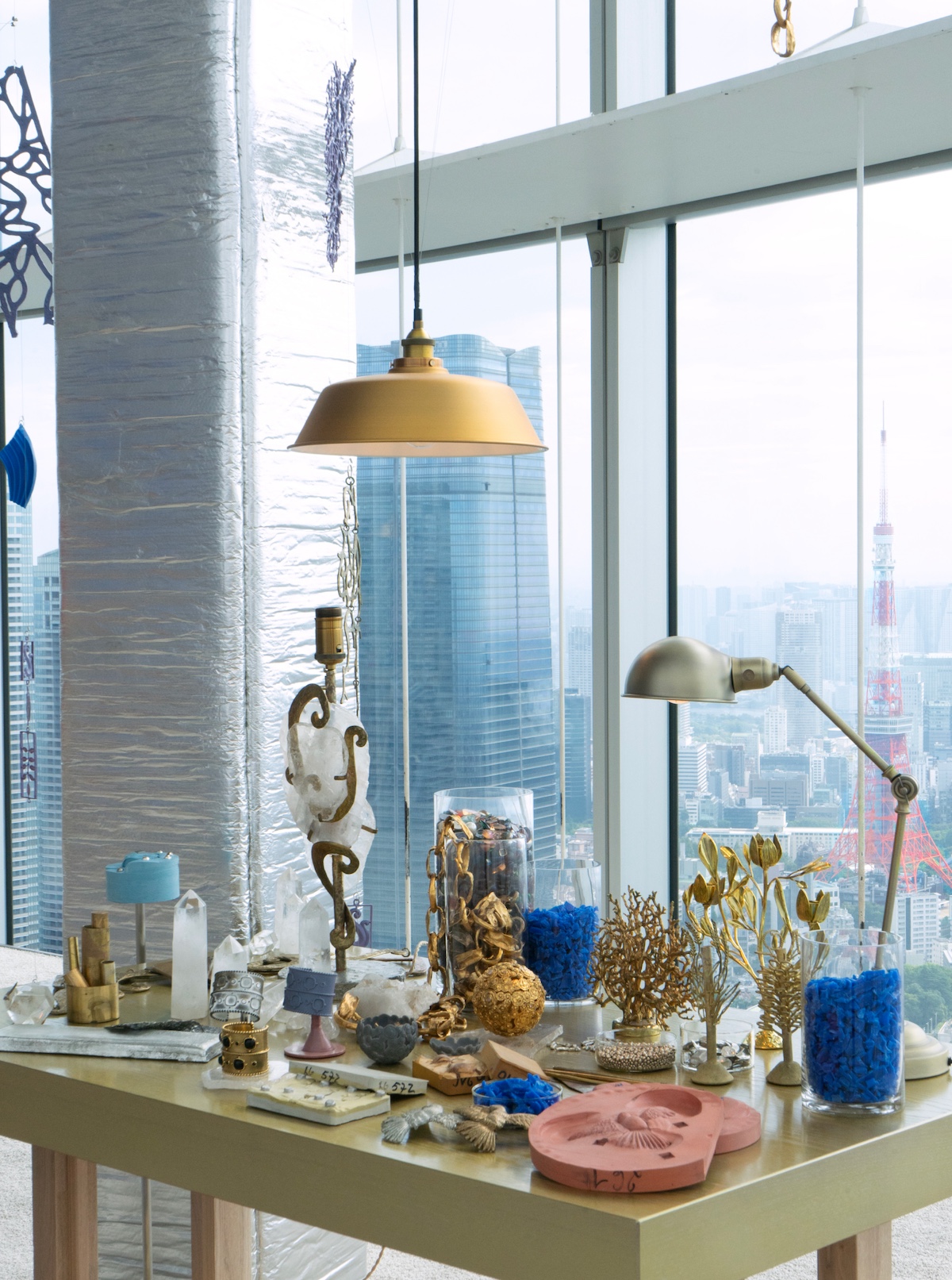
Vue du Festival by le19M x Clarisse Aïn
Today, a network of approximately 60 manufacturers, including maisons d’art, forms Chanel’s ecosystem of savoir-faire. Within this, 11 workshops specialising in tweed, embroidery, featherwork and other crafts have become resident at le19M: the cultural complex founded by Chanel in northeast Paris in 2021. Amid challenging conditions for craftsmanship, such as the mechanisation of production and an ageing artisan population, le19M aims to preserve traditional crafts while enabling their evolution. Currently, around 700 embroiderers, feather workers, goldsmiths, pleaters, bootmakers, hatmakers, and milliners work in the building. The name le19M derives from its location in Paris' 19th arrondissement, as well as the day of house founder Gabrielle ‘Coco’ Chanel's birth, while the letter M represents ‘mode, mains, maison, manufactures, and métiers d’art‘.
This month, le19M has temporarily relocated to Tokyo. The purpose is to exhibit creations developed in collaboration with Japanese artisans and other creatives. In the light of the works of le19M's artisans – characterised by an inherent intricacy, caution, and perseverance – there is a resonance with Japan's own meticulous dedication to craftsmanship. The collaboration between the two was natural.
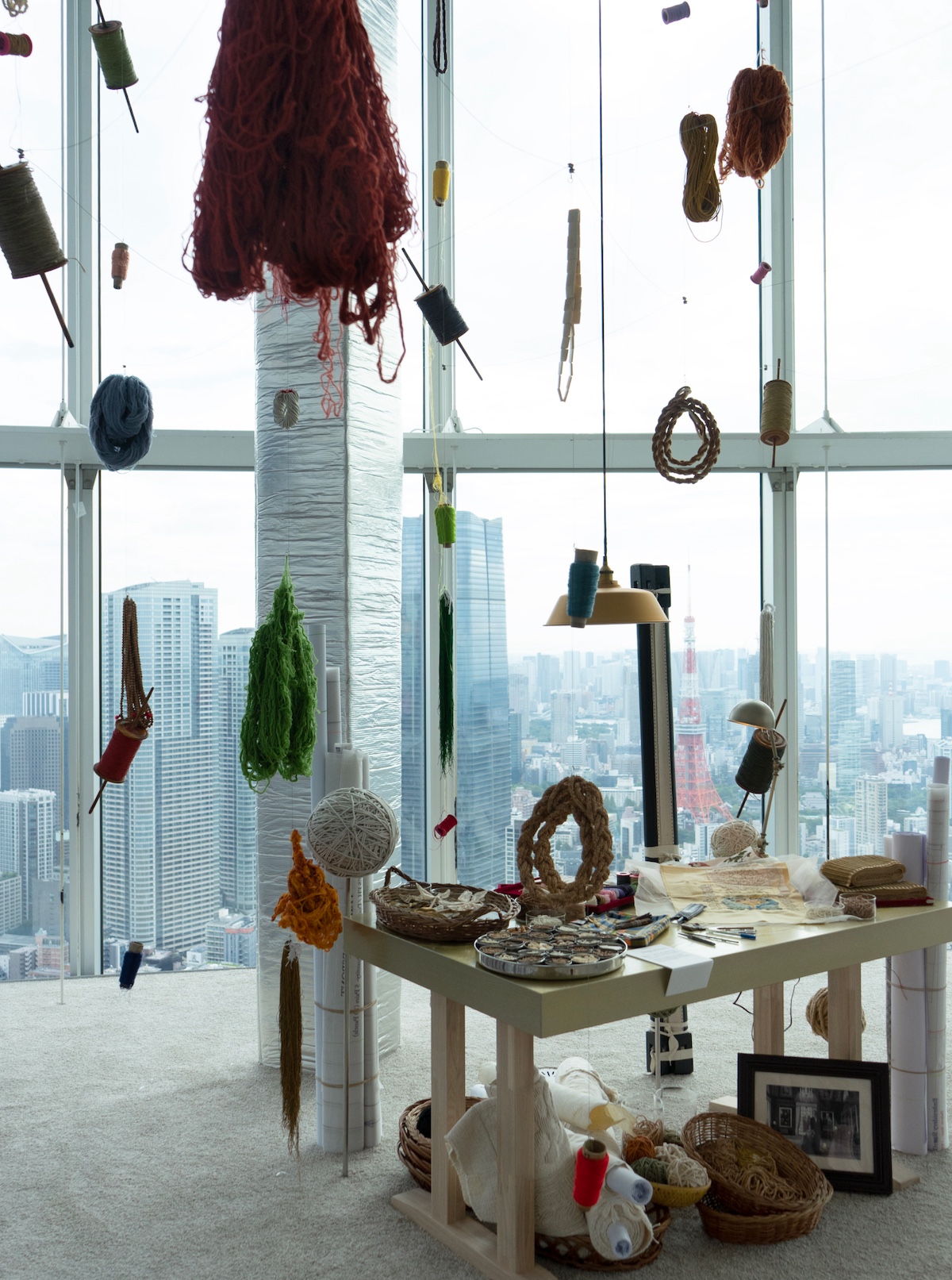
Vue du Festival by le19M x Clarisse Aïn
The Tokyo exhibition, ‘Chanel presents la Galerie du 19M Tokyo’ – staged on the 52nd floor of the 53-storey Mori Tower, offering 360-degree views of Tokyo – unfolds in three sections. The first section, ‘Le Festival’, introduces the specialised techniques of each of le19M’s 11 workshops, conveying the richness and breadth of their craftsmanship through an immersive installation. Objects that are distinct to each workshop – wooden hat moulds, pleating templates, embroidery components – hang suspended from the ceiling, creating an atmosphere reminiscent of wandering into the ateliers of le19M. Tools used daily by the craftspeople in their respective workshops and fabric samples are displayed, allowing visitors to observe up close how the raw materials gradually metamorphose into works of art.
The highlight of the exhibition is the second section, ‘Beyond Our Horizons’, which showcases collaborations between le19M's craftspeople and nearly 30 creators and artisans from Japan and around the world, curated by five editorial members: film director and writer Momoko Ando; Casa Brutus magazine editor Yoichi Nishio; Shinichiro Ogata, founder and creative director of multidisciplinary design studio Simplicity; curator Kayo Tokuda; and Aska Yamashita, artistic director of Chanel-owned embroiderer Montex. Its scenography, much like le19M in Paris, evokes the image of a creative village – a gathering place for numerous craftspeople – and is inspired by natural elements such as wind, water, fire, and earth. This resonates with Japan's traditional craftsmanship, which has long embraced the local natural environment, creating works in harmony with their individual locales.
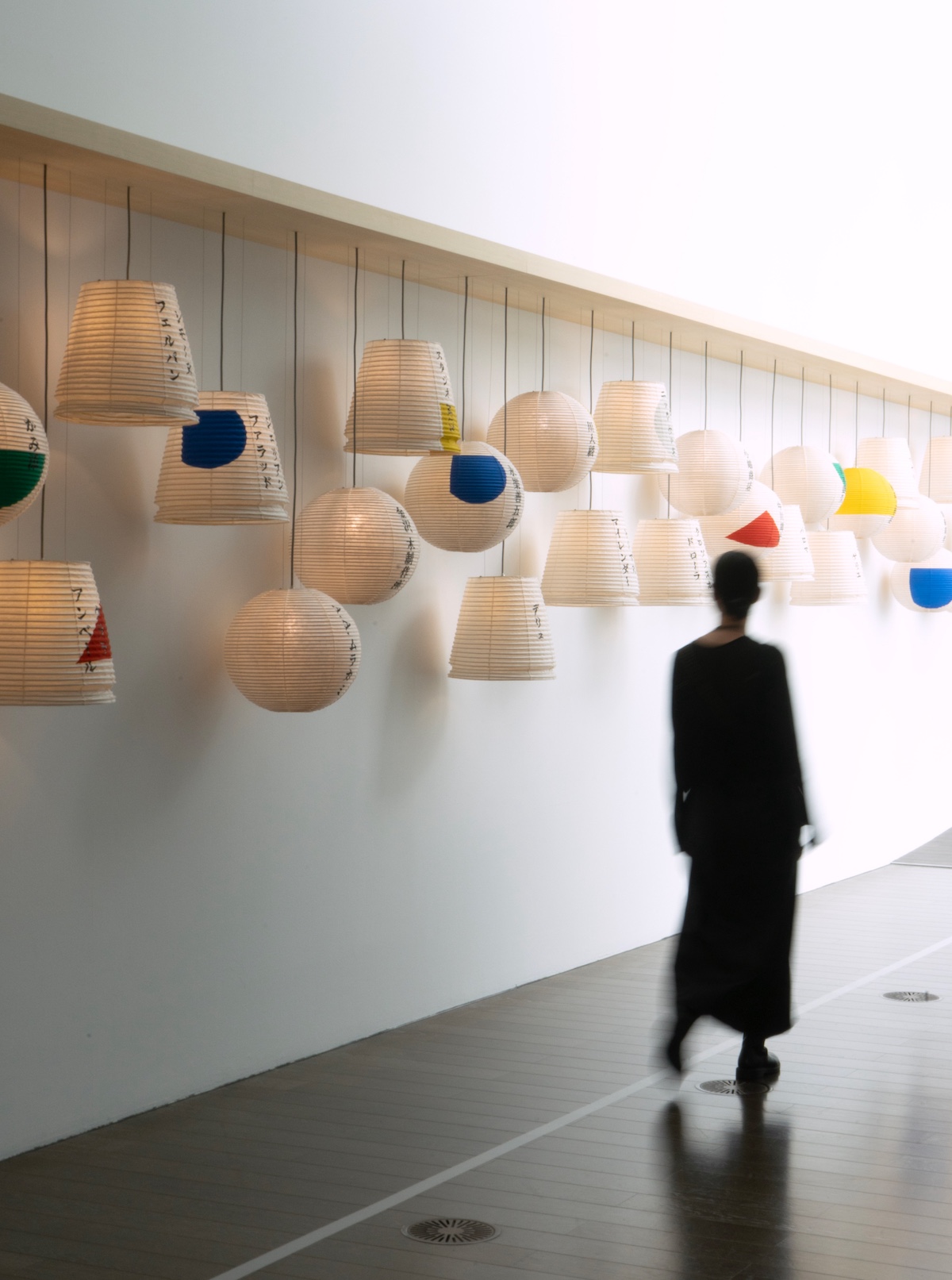
Vue du Passage - Beyond our Horizons by le19M x Clarisse Aïn
Don't expect typical fashion here. The collaborations between le19M and the various artists and artisans push the boundaries of their craft, opening up new horizons. For instance, a hat becomes a chochin Japanese paper lantern, a collaboration between Kojima Shoten, which has crafted lanterns in Kyoto for over 200 years, and le19M's hat workshop, Maison Michel. ‘The hat moulds are elliptical, not perfectly circular, making it challenging. We had to devise solutions like connecting bamboo rods with both curved and straight sections,’ says Ryo Kojima, head of Kojima Shoten’s tenth generation, which has produced countless diverse lanterns over its centuries in operation.
Receive our daily digest of inspiration, escapism and design stories from around the world direct to your inbox.
A noren curtain – a Japanese textile divider – on display is also a collaborative work, seeing Akiko Ishigaki, a dyeing and weaving artisan from Iriomote Island in Okinawa, unite with maison d’art Lesage, known for its embroidery and tweed. For over 40 years in Okinawa, Ishigaki has cultivated bashofu, a fabric made from fibres of the Japanese banana plant basho. Her process begins with growing the plant, peeling its trunk bark, boiling it in lye to extract the fibres, and then splitting these fibres by hand into fine strands, making the textile from the material itself. Ishigaki sent her bashofu thread to Lesage, where it was woven into the noren. Here, Lesage tweed became a noren curtain.
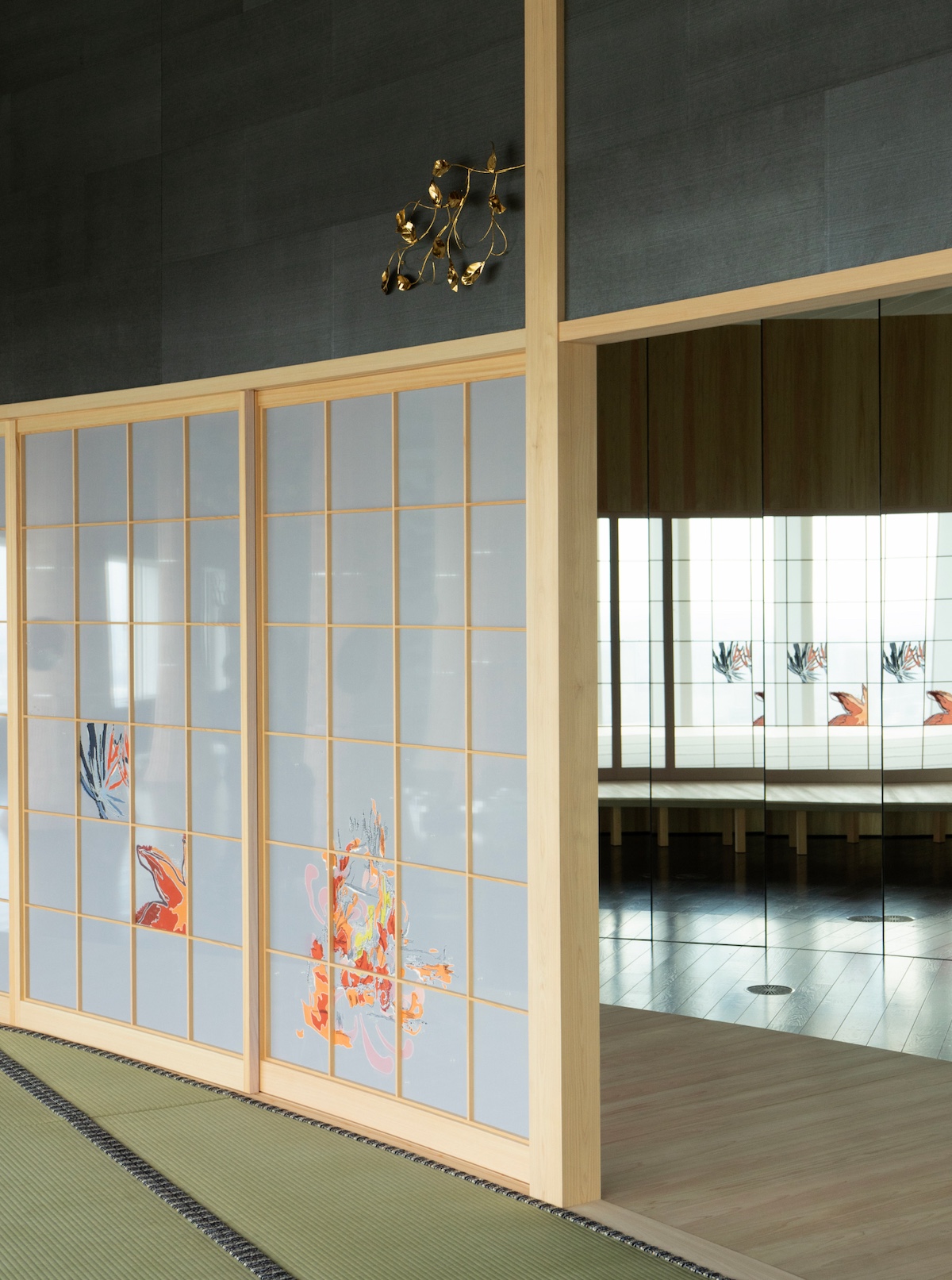
Vue du Rendez-vous - Beyond our Horizons by le19M x Clarisse Aïn
A take on traditional sukiya-style architecture is also on display, evoking traditional Japanese townhouses that feature tatami mats, shōji screens, and transoms. Created in collaboration between Kamisoe, which crafts karakami Japanese paper in Kyoto, and Lemarié, workshops for corsage, feather work and haute couture tailoring, a series of paper corsages are applied over sukiya-style interior walls – just like applying corsage over the clothes. Elsewhere, artisans at the bronze workshop Desrues created the fusuma sliding door handles, while jewellery workshop Goossens crafted the traditional shoe-removing platform. While it may defy the rules of what constitutes sukiya-style architecture, such radical challenges are precisely how you innovate tradition to open the door to the future. These posed a challenge for the Japanese artisans, who had to devise new methods different from their usual practices.
So what can we expect from this cross-continental collaboration? ‘The immateriality of the collaboration is what makes the project beautiful and magical, [and that is] significant,’ says Pavlovsky.
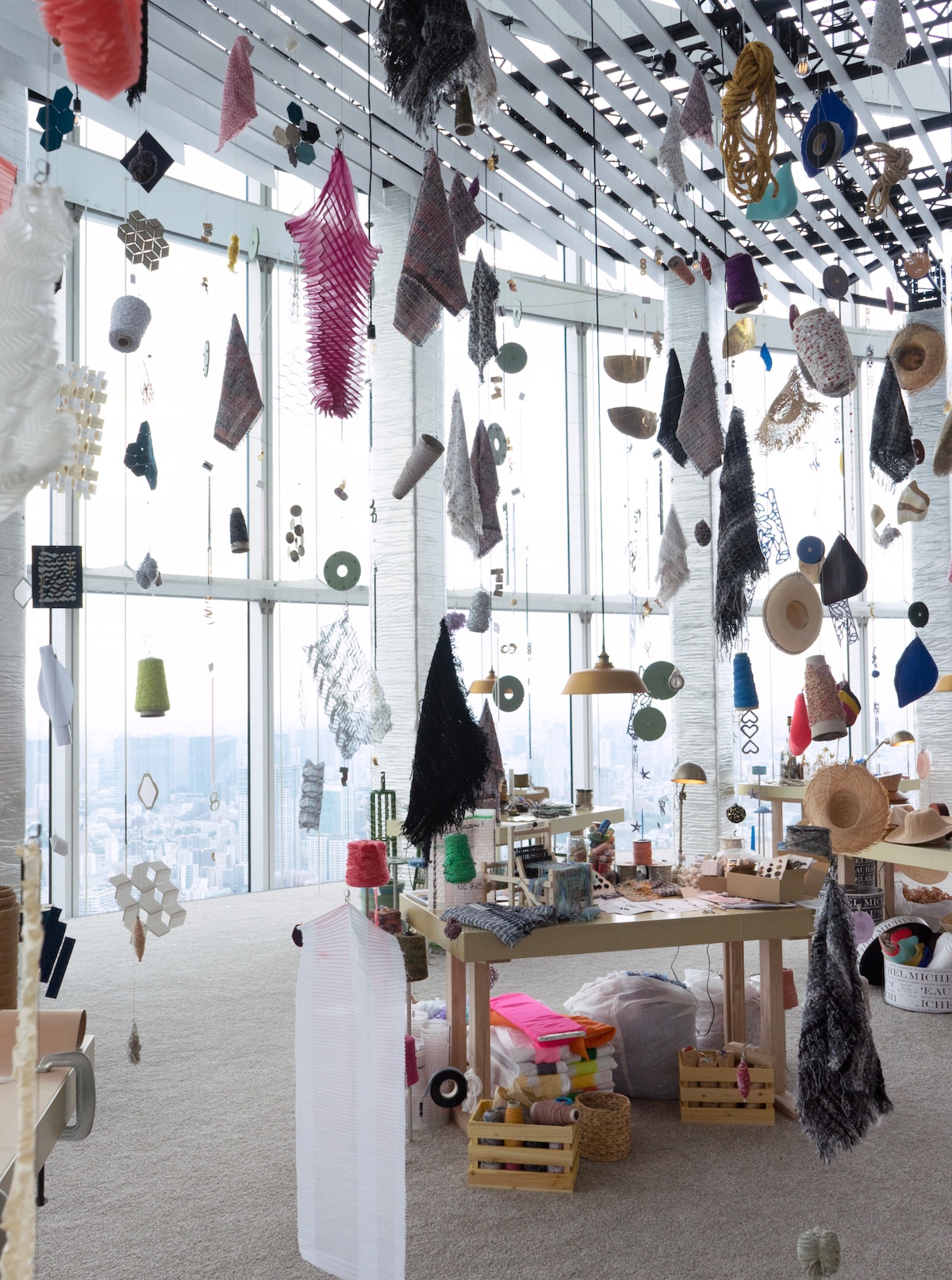
Vue du Festival by le19M x Clarisse Aïn
The final, third section of the exhibition traces the century-long history of embroidery workshop Lesage – probably the most well known of le19M’s maisons d’art – during which it has underpinned fashion history. The exhibition conveys how Lesage’s history, beginning in 1924, has integrated embroidery into fashion not as an add-on or embellishment but interwoven into the designs, while also using their skills on interior design projects, stage costumes, and textiles for historical furniture. Like this rest of the display, it demonstrates le19M’s effusive approach to craft – one seductive enough to make you want to become an artisan yourself.
‘La Galerie du 19M Tokyo’ runs from 30 September to 20 October 2025 at Mori Tower 52nd, Tokyo, Japan, then travels to la Galerie du 19M in Paris early in 2026.
-
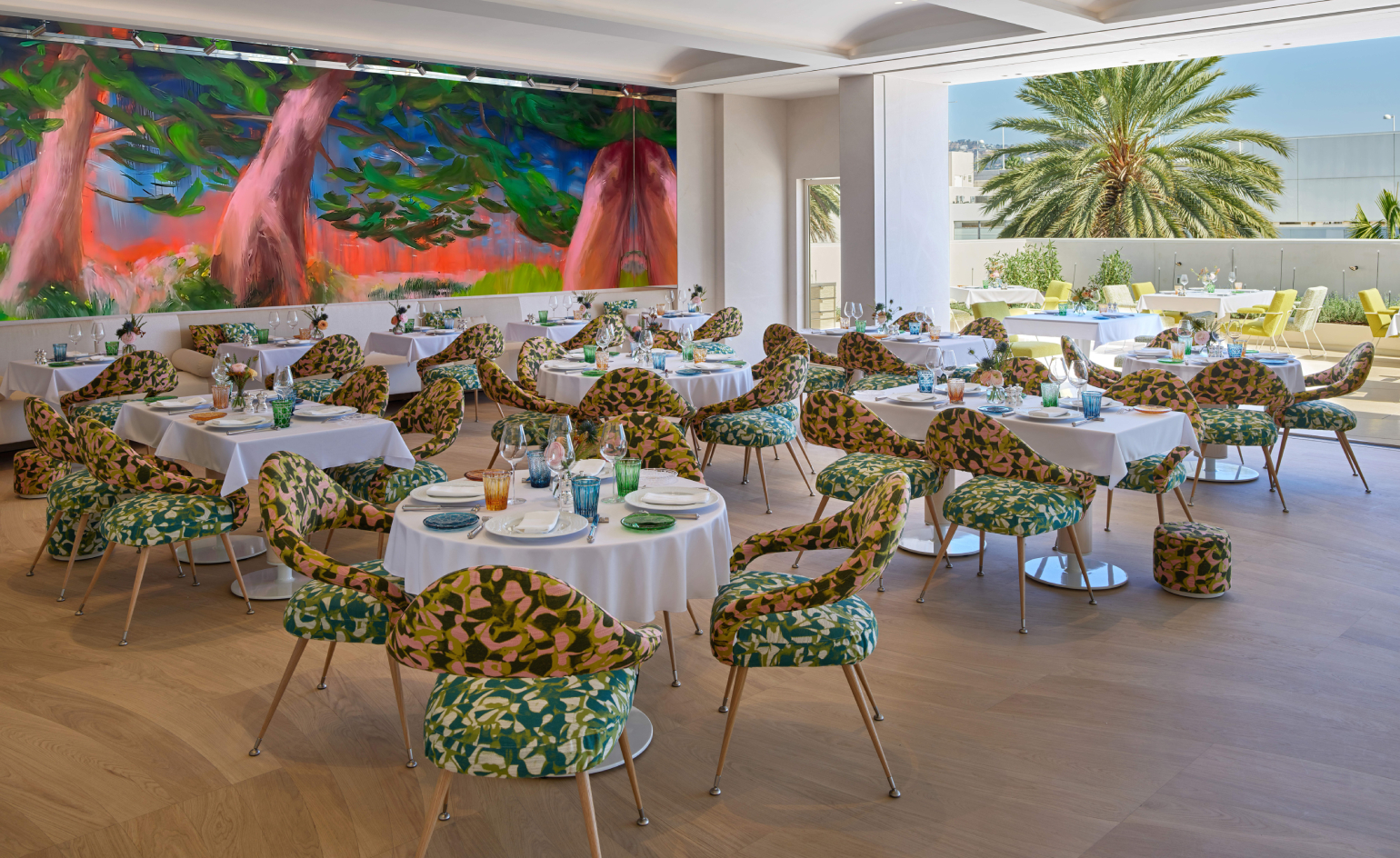 Dior’s new Beverly Hills dining salon raises the bar for couture cuisine
Dior’s new Beverly Hills dining salon raises the bar for couture cuisineFrom Peter Marino’s onyx bar and faceted mirrored walls to Nicole Wittenberg’s vast, immersive botanical canvas, Dior’s first restaurant outside Paris is here
-
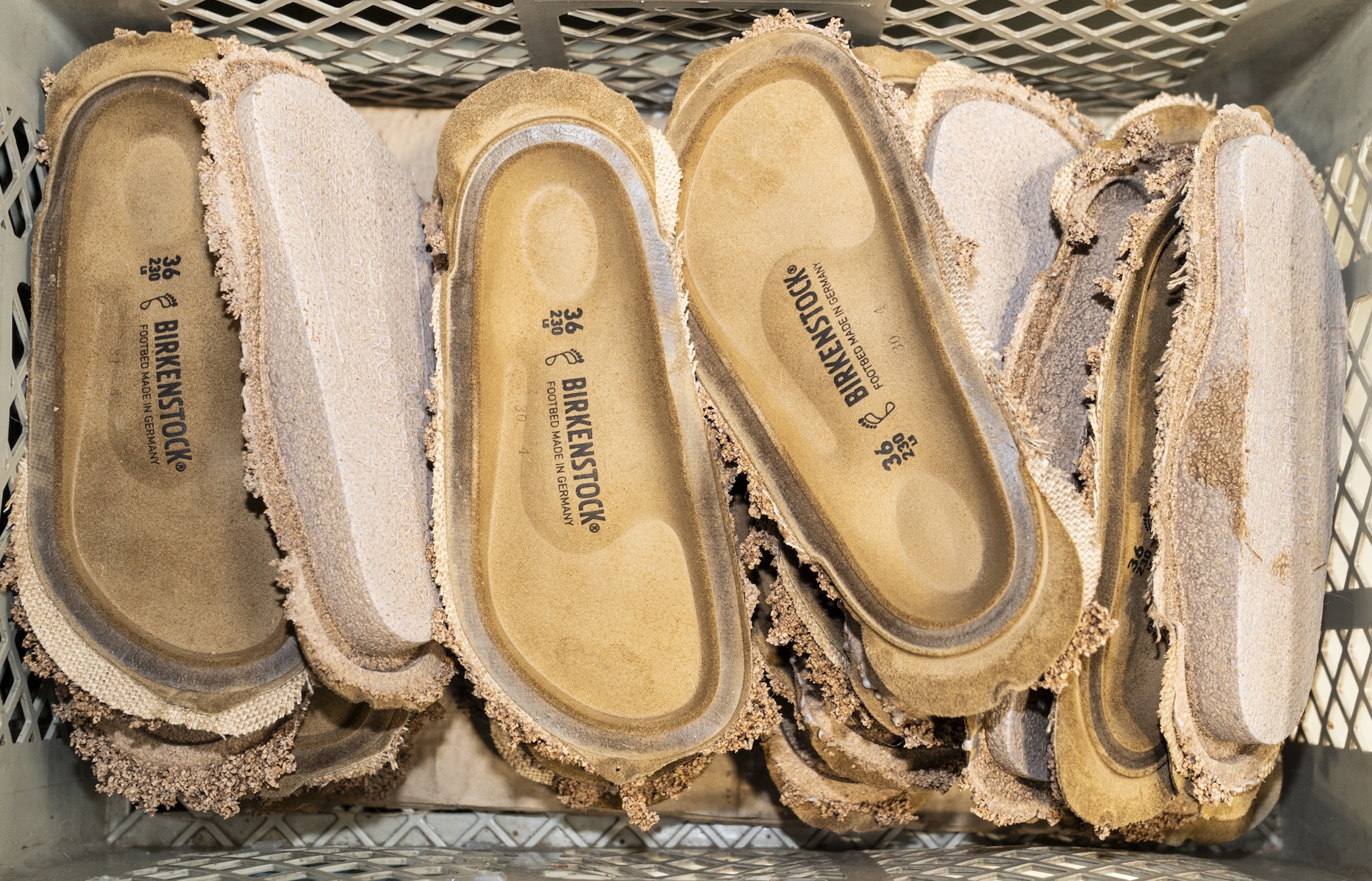 Inside the factory where your Birkenstocks are made
Inside the factory where your Birkenstocks are madePart high-tech laboratory, part artisanal workshop, the German factory straddles past and future. For Wallpaper*, Stuart Brumfitt takes a rare tour
-
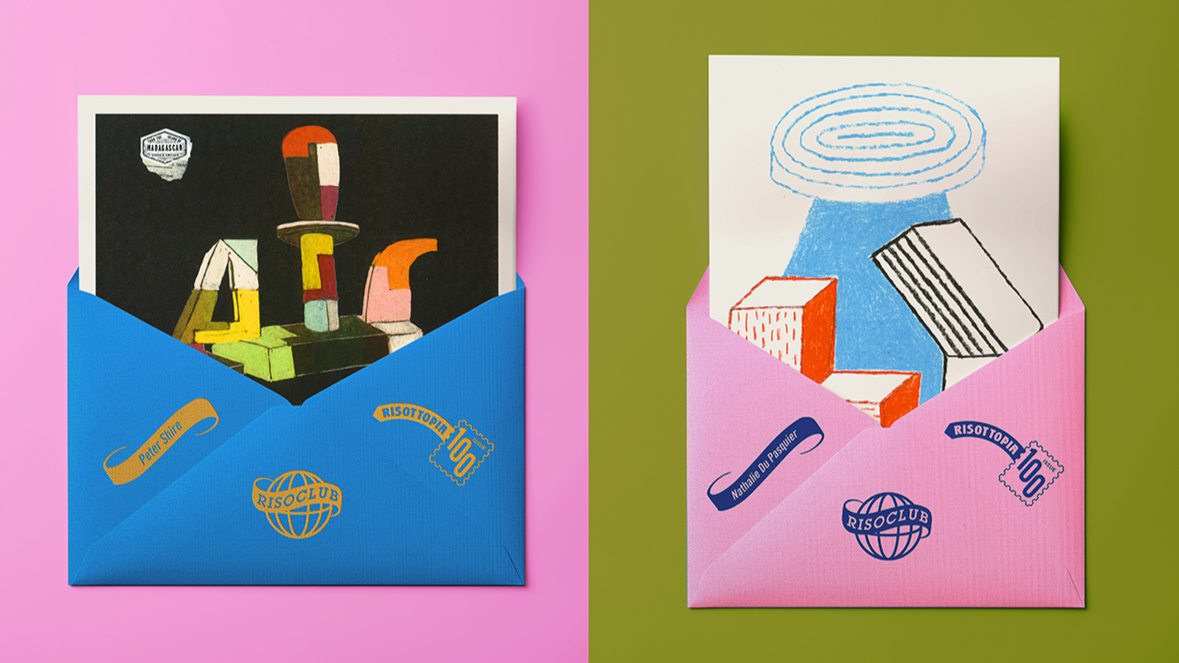 Nathalie Du Pasquier, Peter Shire and Barbara Stauffacher Solomon create exclusive artworks for Riso Club
Nathalie Du Pasquier, Peter Shire and Barbara Stauffacher Solomon create exclusive artworks for Riso ClubGlasgow print studio Risotto celebrates the 100th issue of its monthly Riso Club – a hand-printed, hand-posted subscription that has grown from a small artist exchange into a global community
-
 ‘I just wanted to have fun’: Matthieu Blazy makes a joyful Chanel debut
‘I just wanted to have fun’: Matthieu Blazy makes a joyful Chanel debutTransforming the Grand Palais into a glowing solar system, Matthieu Blazy’s much-anticipated first collection was rooted in ideas of modernity and freedom, marking a bold new chapter for Chanel
-
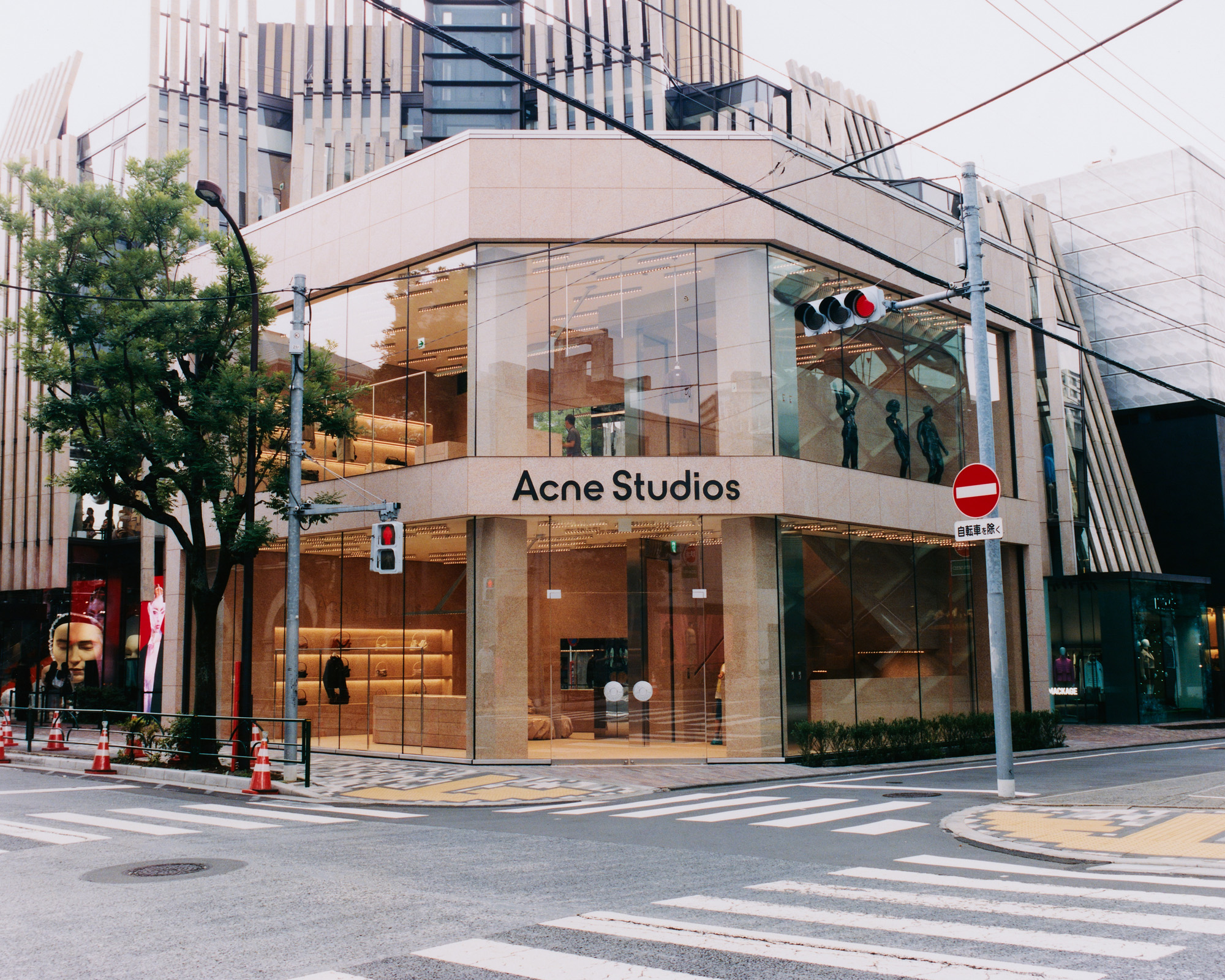 Step inside Acne Studios’ pink-hued Tokyo flagship: ‘fashion is supposed to be fun’
Step inside Acne Studios’ pink-hued Tokyo flagship: ‘fashion is supposed to be fun’Acne Studios contrasts sharp minimalism with soft touches at its playful new Tokyo flagship, designed in collaboration with Swedish studio Halleroed
-
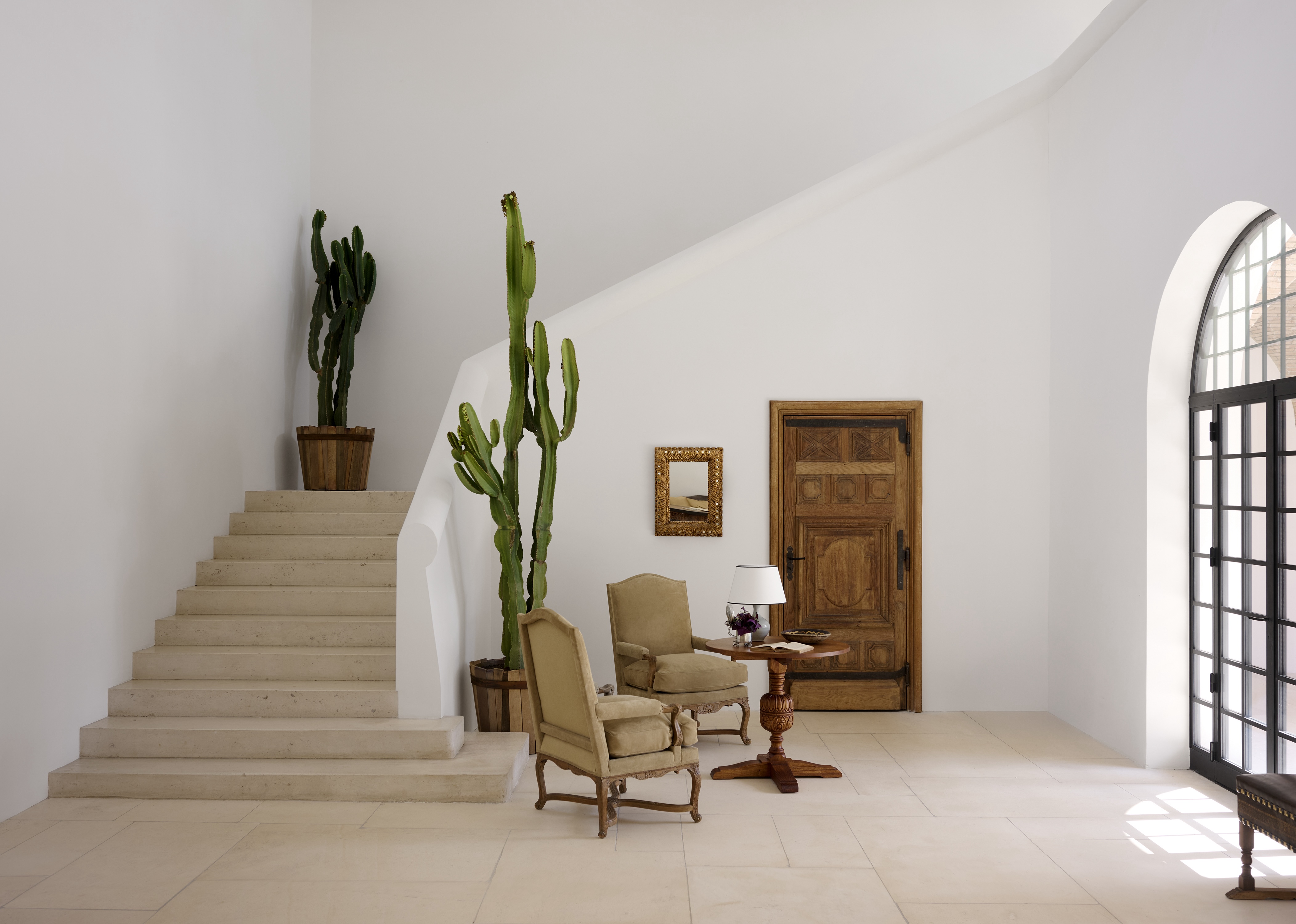 The story behind La Pausa, Gabrielle ‘Coco’ Chanel’s newly restored holiday home on the French Riviera
The story behind La Pausa, Gabrielle ‘Coco’ Chanel’s newly restored holiday home on the French RivieraFollowing a meticulous multiyear restoration by the house of Chanel, La Pausa reopens as a private home and space for creative contemplation and inspiration
-
 Power suits, thigh-high boots, dangerous glamour: these looks capture A/W 2025’s defining trends
Power suits, thigh-high boots, dangerous glamour: these looks capture A/W 2025’s defining trendsFrom riffs on the working uniform to a mood of dangerous glamour, the A/W 2025 collections encapsulated in 12 distinctive looks and accessories
-
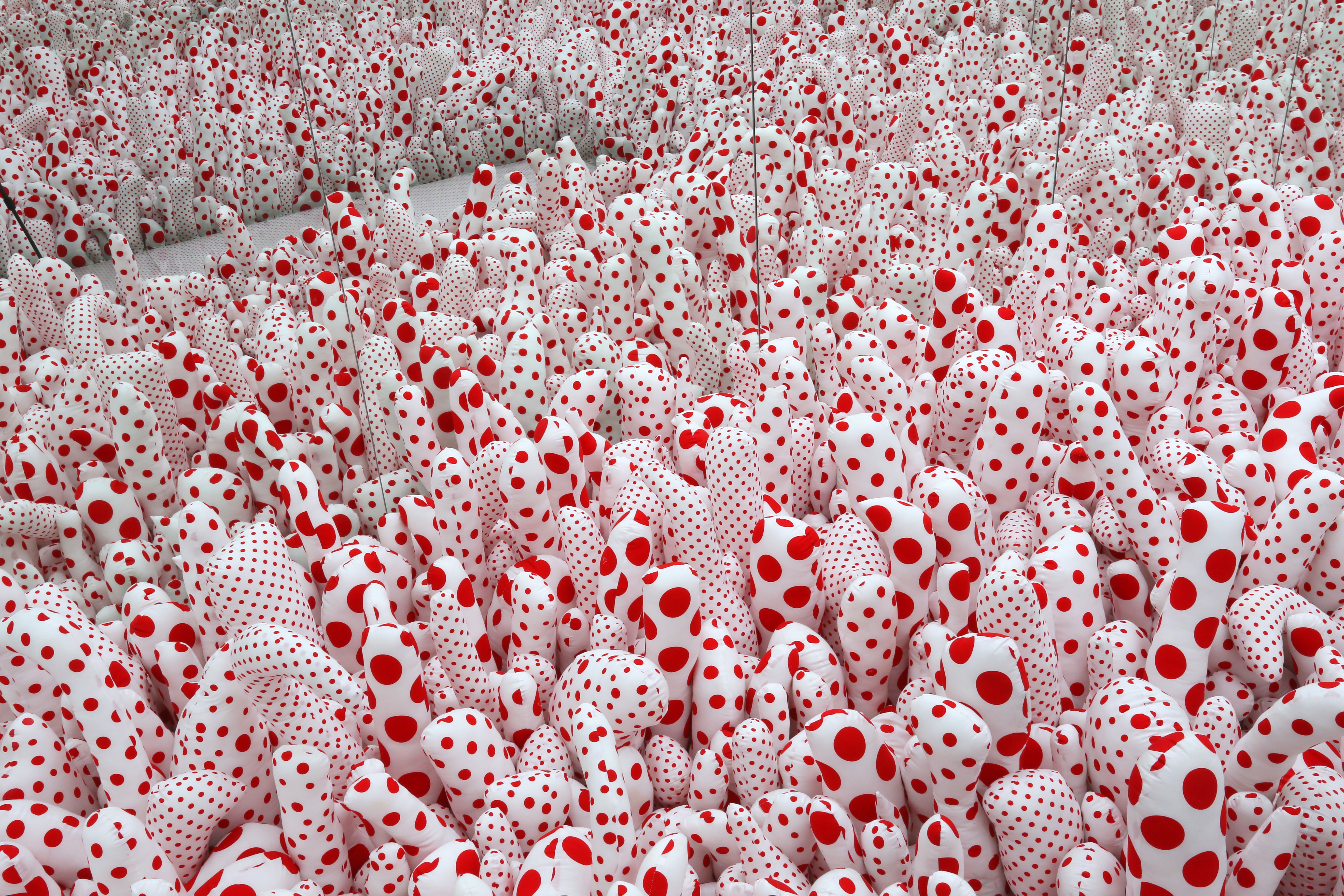 Louis Vuitton’s duo of Osaka exhibitions celebrate the house’s deep-rooted relationship with Japan
Louis Vuitton’s duo of Osaka exhibitions celebrate the house’s deep-rooted relationship with JapanUnfolding in Osaka this summer, ‘Visionary Journeys’ is a transporting trip into the house’s history, while ‘Yayoi Kusama – Infinity’ promises an immersion into the works of the Japanese artist, who is a longstanding Louis Vuitton collaborator
-
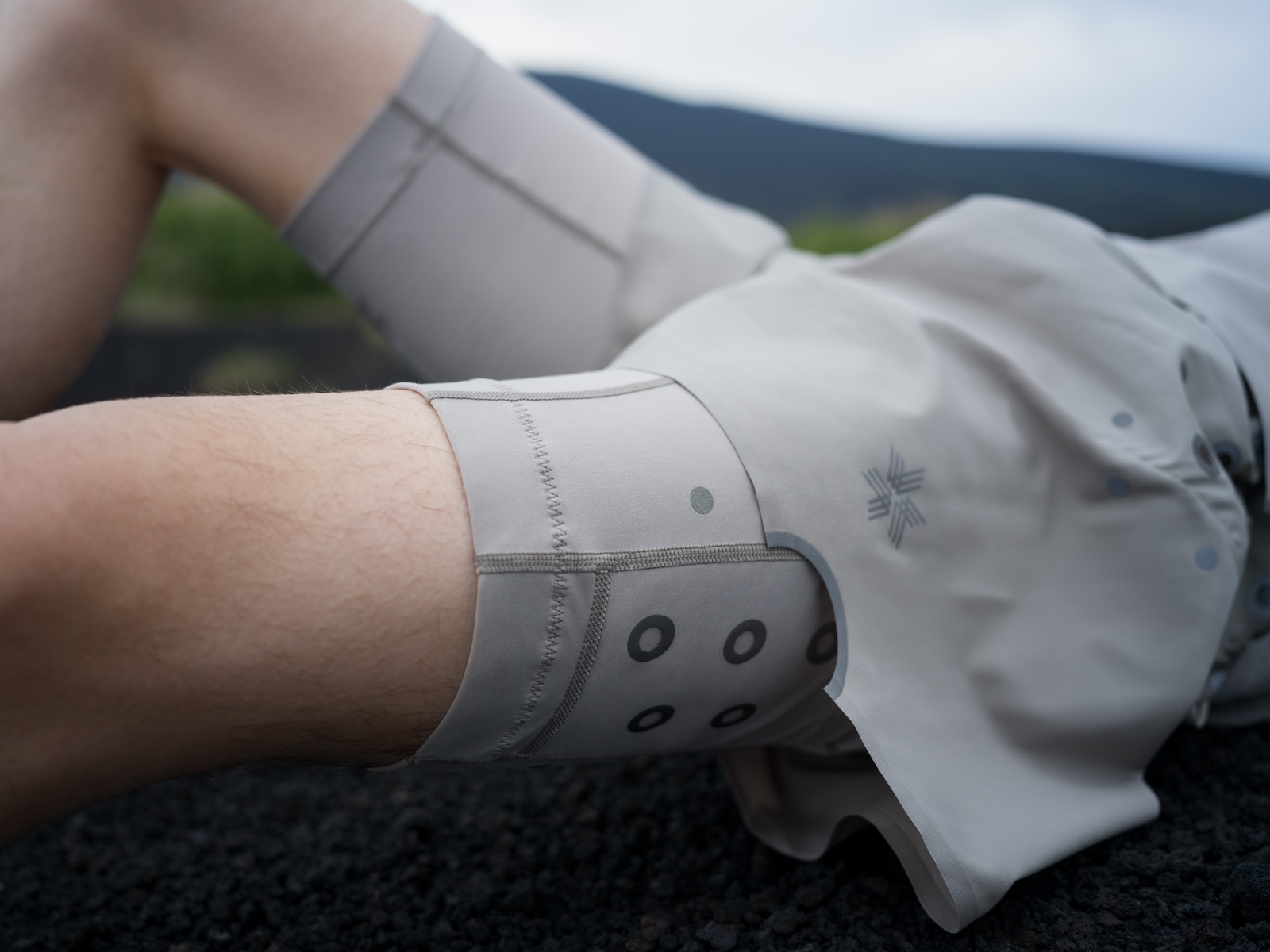 Goldwin 0’s first-ever performance wear is body-mapped to keep you cool
Goldwin 0’s first-ever performance wear is body-mapped to keep you coolThe ‘Performance Capsule’ from Goldwin 0 – an experimental offshoot of Japanese technical wear label Goldwin – draws inspiration from trail running for its meticulously tested sportswear, which uses experimental ventilation techniques to help you work out in the heat
-
 The world’s best swimwear brands, according to Wallpaper*
The world’s best swimwear brands, according to Wallpaper*From architectural precision to a sense of ease and luxury, our comprehensive guide to the world’s best swimwear brands – for both men and women – will help you find the perfect beach attire this summer
-
 A beauty lover’s tour of Tokyo: hair, nails, shopping and bathing
A beauty lover’s tour of Tokyo: hair, nails, shopping and bathingPart 2 of our Summer in Tokyo beauty series sees Lara Johnson-Wheeler seeking out the city’s best beauty spots